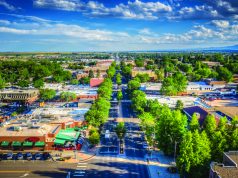on Monday, getting the agency out of the rocket-launching business in
favor of an aggressive expansion of research and development that that
would steer the agency away from the launch pad and instead put its
engineers in the laboratory, where they would design futuristic
vehicles capable of going beyond the moon.
As expected, his budget plan would cancel
Constellation program and its goal of returning astronauts to the moon
by 2020. The troubled rocket program, crippled by funding shortfalls
and technical problems, ultimately would cost taxpayers at least
Instead,
“Imagine trips to Mars that take weeks instead of
nearly a year, people fanning out across the inner solar system,
exploring the Moon, asteroids and Mars nearly simultaneously in a
steady stream of ‘firsts,” said NASA Administrator
“We will blaze a new trail of discovery and development,” he said.
It would be a decade or more, however, before
Bolden said ending Constellation was necessary to ensure
Currently, he said, the five-year-old Constellation
program is burning through billions of dollars and falling further
behind schedule. The program couldn’t get American astronauts back to
the moon until at least 2028, he said.
“So as much as we would not like it to be the case
… the truth is that we were not on a path to get back to the Moon’s
surface,” Bolden said. “And as we focused so much of our effort and
funding on just getting to the Moon, we were neglecting investments …
required to go beyond.”
Obama’s plan calls for
The extra money, plus dollars freed up when the
space shuttle is retired later this year, would fund new robotic and
science missions, including a proposal to put a probe on the moon that
could send a video stream back to Earth.
—
(c) 2010, The Orlando Sentinel (Fla.).
Visit the Sentinel on the World Wide Web at http://www.orlandosentinel.com/.
Distributed by McClatchy-Tribune Information Services.














